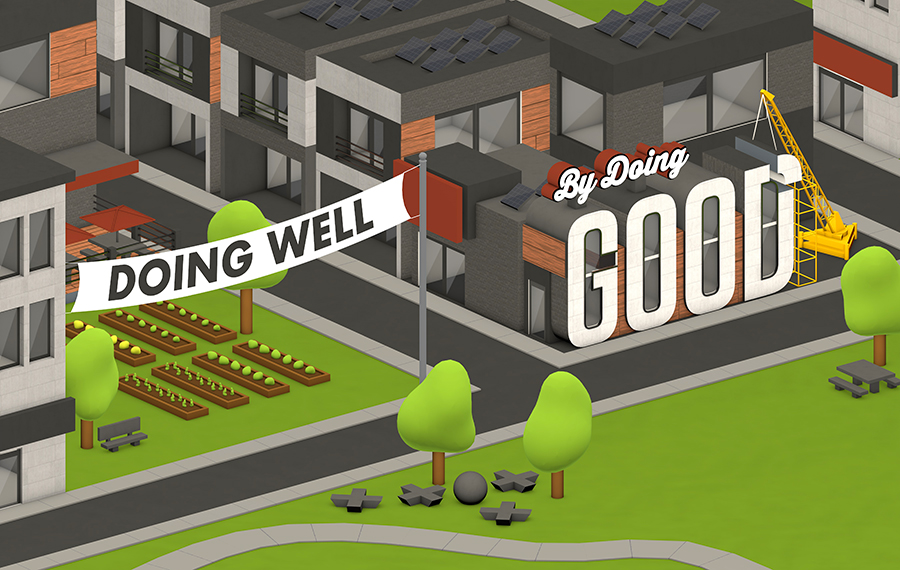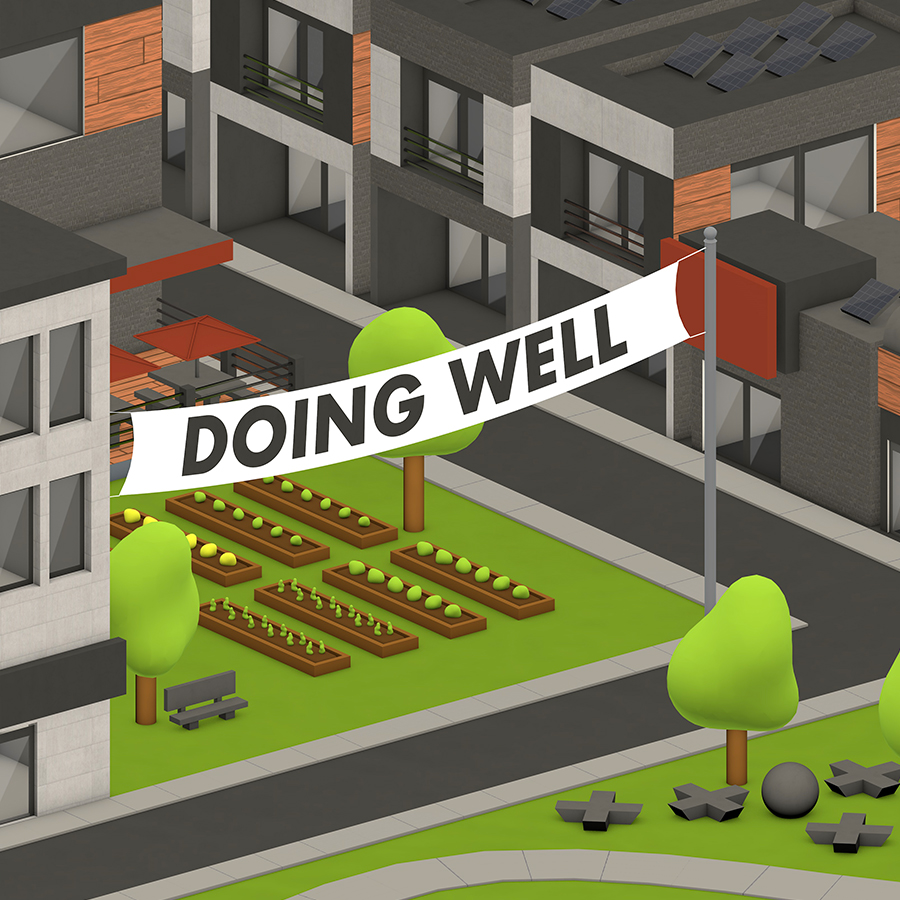
That key phrase is not just some random maxim tacked on to a company’s mission statement in order to stay current.
Increasingly, organizations are placing the philosophy at their core. For more than a few, the concept has become both a steady foundation and a catalyst for growth.
“There’s an explanation for the upsurge of this mindset and its place in training future business professionals,” says Michael Robinson, director of Auburn University’s Executive Master of Real Estate Development program: It is arguably the most effective way of operating a thriving business in the 21st century.
Though the model has shifted throughout the decades, “doing well by doing good” has been in practice since the days of Benjamin Franklin, the American founding father credited with coining the phrase.
“The sentiments for the aphorism arose out of the intellectual ferment of 18th Century American Enlightenment, where ideas of liberty, equality, and justice took hold,” Robinson says, adding that the epicenter of the idea’s inception and growth was Philadelphia, at the time the nation’s largest city.
“Franklin, prior to the revolution, had become wealthy, in part, by patenting his inventions and giving access to the public for the public good,” he says. “In this small Petri dish of the Philadelphia community, Franklin was able to see the connections between his growing wealth, the prosperity and well-being of his city, and the donations of his intellectual capital to the community.”
And that idea reverberated through the late 19th to mid-20th century, according to Nancy Koehn, a Harvard Business School professor and historian.
“The arc of history in business is all about companies that had social aspirations as well as commercial benchmarks and interests,” Koehn says in an interview with the Harvard Business Review, citing, among others, china manufacturer Josiah Wedgwood, and food tycoon Henry Heinz, who created company towns for employees, providing housing and other needs, and in the mid-20th century, cosmetics tycoon Estee Lauder, who also took measures to care for her employees.
“All of these entrepreneurs would get very, very high marks today on a CSR index,” she says.
But these leaders didn’t do it for superficial reasons.“ They thought that the kind of business they had, and its role in society, were very much interconnected, so always doing good by society was doing well for their business,” Koehn says.
But Robinson points out that by the late 20th century, that paradigm was all but obsolete.
“Since the rise of large multinational corporations and the move to a global economy, since the 1980s, there has been a precipitous weakening between corporate operations and local and regional communities,” he says.
Films like “Wall Street” and “Glengarry Glen Ross” reflected the new reality with their messages: “Greed is good.” and “Always be closing.”
Robinson says the shift back to “doing well by doing good” has resulted in burgeoning trends including corporate social responsibility, and impact investing, with shareholders and contributions to organizations that emphasize social and environmental impact along with financial return.
Similarly, triple bottom line, often called TBL or 3BL, which divides a company’s accounting framework into social, environmental, and financial components, with sustainable development, which emphasizes avoiding depletion of natural resources, are on the rise.
“It seems that businesses are beginning to return to understanding, as Franklin did, that the welfare of their stakeholders, including employees, directly influences their bottom line of profits and losses, thereby affecting their shareholders,” Robinson says.
Doing well by doing good—realizing the responsibility to give back to society—is a guiding principle and strategic plan of both progressive startups around the world and established businesses such as Starbucks, Land’s End, Ben and Jerry’s, and Whole Foods.
“Business leaders are finding that successful bottom lines are not in conflict with the promotion of social and environmental value, and are learning that they actually have a symbiotic relationship to one another,” says Robinson, who prioritizes the concept in teaching students in the MRED program, a joint venture between the Harbert College and Auburn’s College of Architecture, Design, and Construction.
The students see the concept in action on field trips—a couple of ventures took them to a commercial building in Cambridge, Massachusetts, that earned platinum status in LEED (Leadership in Energy and Environmental Design) and to the Convention and Exhibition Center in Melbourne, Australia, which earned a 6-Star Green Star rating for its sustainability initiatives.
On these trips, “students hear the same refrains from developers, public-private partnerships, real estate investment trusts, or investment houses: focusing on community enhancement, high performance buildings, health, wellness, and ecological conservation make good business sense,” Robinson says.
These lessons are learned and embraced.

Case in point: Ryan Doyle, a ’12 MRED graduate and now director of oneC1TY Nashville, a sprawling urban community that merges technology-enabled commercial, residential, research and retail activity, is surrounded by teaching hospitals and medical schools and is adjacent to Nashville’s urban core. It’s a kind of utopia founded on the “doing well by doing good” model, constructed for LEED certification, filled with acres of green space for walking, biking, and outdoor music and art events.
It was also a recent destination for MRED students to absorb the concept in action.
Doyle foresees a not-so-distant future in which his Nashville project is the norm. Specifically, he predicts the impact of the built environment on health will become a dominant business concept within the next 10 years.
“Sustainability has built momentum to the point of being an expectation in most circles and measuring the health impact of buildings, transit, and open space to name a few categories will become more typical in the years ahead,” Doyle says. “Certification and measurement models are already being developed.
“Ultimately, this gets back to what consumers want. And I believe technology and other new mediums for gaining awareness and knowledge of the impact we are making on the environment and population health will continue to drive consumers to want healthier development principles,” he says. “If done well, real estate development and investment leaves a legacy for the community to share. It’s a vital lesson Dr. Robinson and our classmates taught me while at Auburn.”
The timing is perfect. The shift resonates with a particular generation: millennials.
“We are seeing the social benefit initiatives of companies being a major consideration in the competition to recruit and retain talent,” Doyle says. “Companies that dig into their communities and develop deep roots through not just philanthropically giving, but integrating their business into workforce development, and foundational civic investments are going to stand the test of time in markets where talent is the resource most necessary to succeed long-term.”


